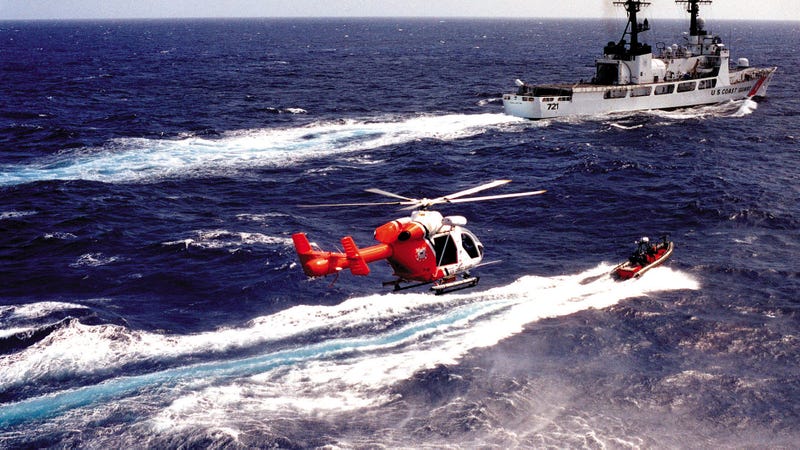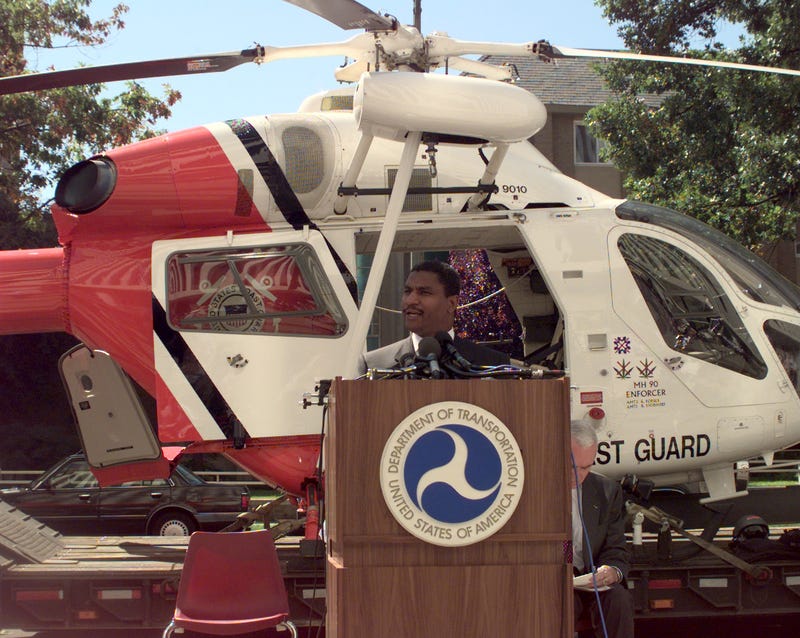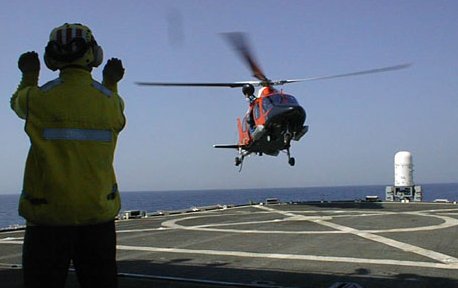Re: Mehrzweckhubschrauber
Verfasst: Fr 8. Mär 2019, 14:17
Hoffentlich nicht... nicht wegen des Hubschraubers, der könnte ganz gut sein, sondern wegen des miserablen Support über den die MD-Kunden ständig klagen.
Forum für Österreichs Militärgeschichte
https://www.doppeladler.com/da/forum/
Quasi eine militärische Variante der MD 902 bzw. als "MH-90 Enforcer" bereits bei der US-Küstenwache im Einsatz. Die Besonderheit ist das "NOTAR"-System (kein Heckrotor sondern Druckluft).Berni88 hat geschrieben: ↑Do 7. Mär 2019, 17:02 Ein neuer Kandidat?
https://www.flugrevue.de/weiterentwickl ... d-969-vor/






Die MD900/MH-90 waren nur geleast:opticartini hat geschrieben: ↑Sa 16. Mär 2019, 22:40Wäre interessant zu erfahren, warum nicht die zuerst verwendeten Hubschrauber zum Zug kamen, vielleicht liegt es an dem, was du geschrieben hast.
The Commandant directed that a proof of concept operation using armed Coast Guard helicopters to interdict and apprehend “go-fasts” be conducted. Two concepts were tested:
- The use of armed helicopters;
This gave rise to the beginnings of a helicopter interdiction force. Commander Mark Torres molded an initial group of ten volunteers into a cohesive and effective team. The group, named HITRON-10, pioneered novel and effective operating tactics and procedures. HITRON was the acronym for Helicopter Interdiction Tactical Squadron and 10 represented the number of crewmembers assigned. The team flew leased MH-90 enforcer helicopters. The MH-90, a militarized version of the MD 900 helicopters built by MD Helicopters Incorporated, was an all weather, short range, single rotor, shipboard helicopter. It was powered by a Pratt & Whitney 206D turboshaft engine and designed without a tail rotor. It could cruise at 120 knots for 2.5 hours. The 6,500-pound helicopter was equipped with weather radar, an Mk III forward-looking infrared system (with video-recording capability), night-vision devices, an external sling capable of lifting 1,500 pounds, and a rescue hoist capable of lifting 600 pounds. The crew consisted of two pilots and one crewman. The crewman's principal duties included firing an M240G 7.62mm machine gun (swivel-mounted at the portside cabin door) and/or a hand-held laser-sighted .50-caliber rifle. He also operated hand-held video and photographic equipment. MD Helicopters Incorporated provided logistic support for the Enforcers.
- The use of high speed over-the-horizon pursuit boats which worked in concert with the armed helicopters. These boats were “souped-up” versions of the Coast Guard’s standard rigid-hull inflatable boats. The OTH boats differed in that they are equipped with twin inboard/outboard turbocharged diesel engines, on board radar and navigational systems for over the horizon operations. The OTH’s were capable of 57 knots.
As a follow-up to Operation NEW FRONTIER, and to bring HITRON-10 to full operational capability, the Coast Guard formed a strategic alliance with Agusta Aerospace Corporation in April 2000 and in March 2001 announced that it would lease up to eight Agusta A109E "Power” aircraft to serve as follow-on aircraft for the proof –of-concept MH-90.
Due to the success during the test and evaluation stage, the HITRON program was validated and designated a permanent Coast Guard unit. HITRON grew to 40 personnel to halt the rising tide of go-fast drug smugglers, and a requirement for eight helicopters was determined necessary to meet cutter deployment cycles. Competitive bids were solicited and in March 2001, an agreement with Agusta Aerospace Corporation was made to lease eight A109E Power helicopters. HITRON Jacksonville faced many new challenges as they converted a civilian corporate helicopter into an armed shipboard deployable aircraft. These aircraft were equipped with the latest radar and Forward Looking Infrared sensor system capable of recording activities on tape to facilitate prosecution. HITRON armed these helicopters with M-16 5.56mm rifles and M240 7.62mm machine guns for warning shots and self-protection, and the RC50 laser-sighted .50 caliber precision rifle to disable the engines of non-compliant suspect vessels. They were given the military designation of MH-68A.
http://www.nhahistoricalsociety.org/wp- ... uadron.pdfOn 27 January 2008 the last MH-68A was formally transferred back to Agusta, ending a partnership which resulted in the interdiction of 126 vessels, 159 tons of cocaine valued at 8.7 billion dollars and the apprehension of 465 narco-smugglers. The MH-68A Stingray was replaced by the MH-65C Dolphin helicopter as the HITRON interdiction and security aircraft.
Ja, genauso wie die danach verwendeten A109E.theoderich hat geschrieben: ↑So 17. Mär 2019, 08:42Die MD900/MH-90 waren nur geleast:opticartini hat geschrieben: ↑Sa 16. Mär 2019, 22:40Wäre interessant zu erfahren, warum nicht die zuerst verwendeten Hubschrauber zum Zug kamen, vielleicht liegt es an dem, was du geschrieben hast.
opticartini hat geschrieben: ↑Sa 16. Mär 2019, 22:40Wäre interessant zu erfahren, warum nicht die zuerst verwendeten Hubschrauber zum Zug kamen.
Die GIS soll aber nicht ersatzlos gestrichen sondern durch eine Steuer ersetzt werden. Und eine allgemeine Pflegeversicherung alleine aus Steuermitteln finanziert wird mAn nicht kommen. Aber im Endeffekt müssen wir uns wohl überraschen lassen. Es geht alleine um den politischen Willen. Geld ist genug da. Vl. sollte man das BH nach einer Bank benennen.propellix hat geschrieben: ↑Mo 18. Mär 2019, 11:17 Erste Rauchzeichen lassen nichts gutes Erwarten: Jetzt soll die GIS gestrichen werden und außerdem muss eine allgemeine Pflegeversicherung aus Steuermitteln finanziert werden. Wir wissen mMn alle was das bedeuten wird!
Ups, wieder einmal keine Hubschrauber, kein Saab 105 Ersatz und nur die Transponder Nachrüstung für den Eurofighter (die für alle Maschinen nur einen einstelligen Mio-Betrag kosten wird). Welch Überraschung. Vom Löger bekommt das ÖBH nur den Spitz, sonst nix.